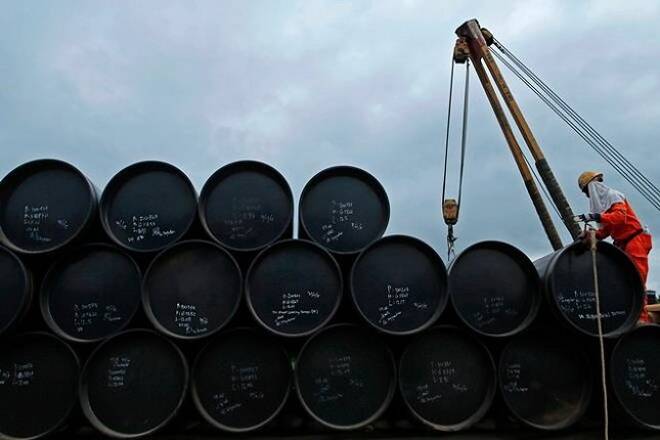Advertisement
Advertisement
Should Investors Be Concerned About the Price of Crude Oil?
By:
Several interesting trends have been taking place in oil markets in recent weeks. For one thing, shipments of crude oil from Saudi Arabia to the United
Several interesting trends have been taking place in oil markets in recent weeks. For one thing, shipments of crude oil from Saudi Arabia to the United States of America have dropped to a 7-year low.
According to data released by the US EIA (Energy Information Administration), the July 14, 2017 figure for imports from Saudi Arabia dropped to 524,000 barrels per day.
Consider that on May 26, 2017, the US was importing 1.362 million barrels of crude oil per day. The slowdown that has taken place in the past 2 months has been remarkable. On June 30, 2017, the US was importing 960,000 barrels of crude oil per day, and the current level is down by 450,000 barrels per day, for a decline of 34%. The current price of Brent crude oil is $50.51 on the ICE (July 26, 2017) for delivery in September 2017, and the price of WTI crude oil on the Nymex is $48.31 per barrel for delivery in September 2017.
What is Driving Oil Prices?
Saudi Arabia as the de facto head of OPEC is intent on capping production to force prices to rise. While the Saudi Arabians have maintained the overall level of exports to other countries, exports to the US have tapered off significantly. This is also true of countries with lower inventory levels. Recently, the oil minister of Saudi Arabia, Khalid Al-Falih announced that, “Exports to the United States will drop measurably…” This is in keeping with Saudi Arabia’s promise to cut production, and exports to the US are certainly helping in that regard.
Exports to the US May Increase by the End of July
While the data has not been confirmed yet, there are still multiple ships sailing from the Kingdom to international destinations, with no ‘final destinations’ listed. Some of these ships could be headed to the US. If this is true, it will skew the readings. This could result in increased exports to the US for the month in question.
OPEC (Organization of Petroleum Exporting Countries) has been seeking to reduce its production by 1.8 million barrels per day, however compliance is proving difficult. For example, a major OPEC producer in South America, Ecuador has refused to comply with production cuts. Likewise, Iraq admitted that it cannot afford to cut production, with just 28% reductions agreed upon.
There are major increases in production expected from North African producers – Libya, while further south, Nigeria is being brought to book. Presently the Libyans do not expect their oil production to exceed 1 million barrels per day, however this is still significantly less than what the country was producing prior to the Arab spring that ousted Gaddafi.
As it stands, production levels remain high with African oil producers, and overall production will likely remain at elevated levels. On Monday, 24 July, OPEC exerted pressure on member countries to reduce their elevated levels of oil stocks, to bolster prices. Along with Russia, many leading non—OPEC oil producers want to reduce their production by March 2018. In January, the price of crude oil spiked to $58 per barrel, but prices have retreated sharply since then.
OPEC is Tightening the Screws on Member Countries for Production Cuts
Oil markets are taking significantly longer to clear inventory levels, and this has resulted in suppressed prices. Once again, increases in WTI crude oil production are having a negative effect on oil prices. While OPEC countries seek to reduce output, US WTI crude oil producers are increasing production to fill the shortfall. In a fortuitous turn of events for OPEC, Nigeria has agreed to gradually reduce its production from its current level of 1.8 million barrels per day.
Professional broker, Harland Clarke of Saxon Trade commodities commented:
‘No timeframe has been specified for the production cuts, but a monitoring committee has been established to ensure compliance. The news that Nigeria will reduce output was viewed positively by speculators and futures traders.’
Oil rose by 1% to $48.50 per barrel, on the assumption that exports from Saudi Arabia would reduce overall exports to 6.6 million barrels per day in August 2017.
Still, global stockpiles of oil remain 250 million barrels higher than the 5-year average for developed nations. Stocks have dropped by 90 million barrels, but bearish sentiment remains. The biggest reductions in oil production have come from Kuwait and Saudi Arabia, while Iraq and the UAE have not committed themselves to production cuts.
About the Author
Guestauthor
Advertisement
